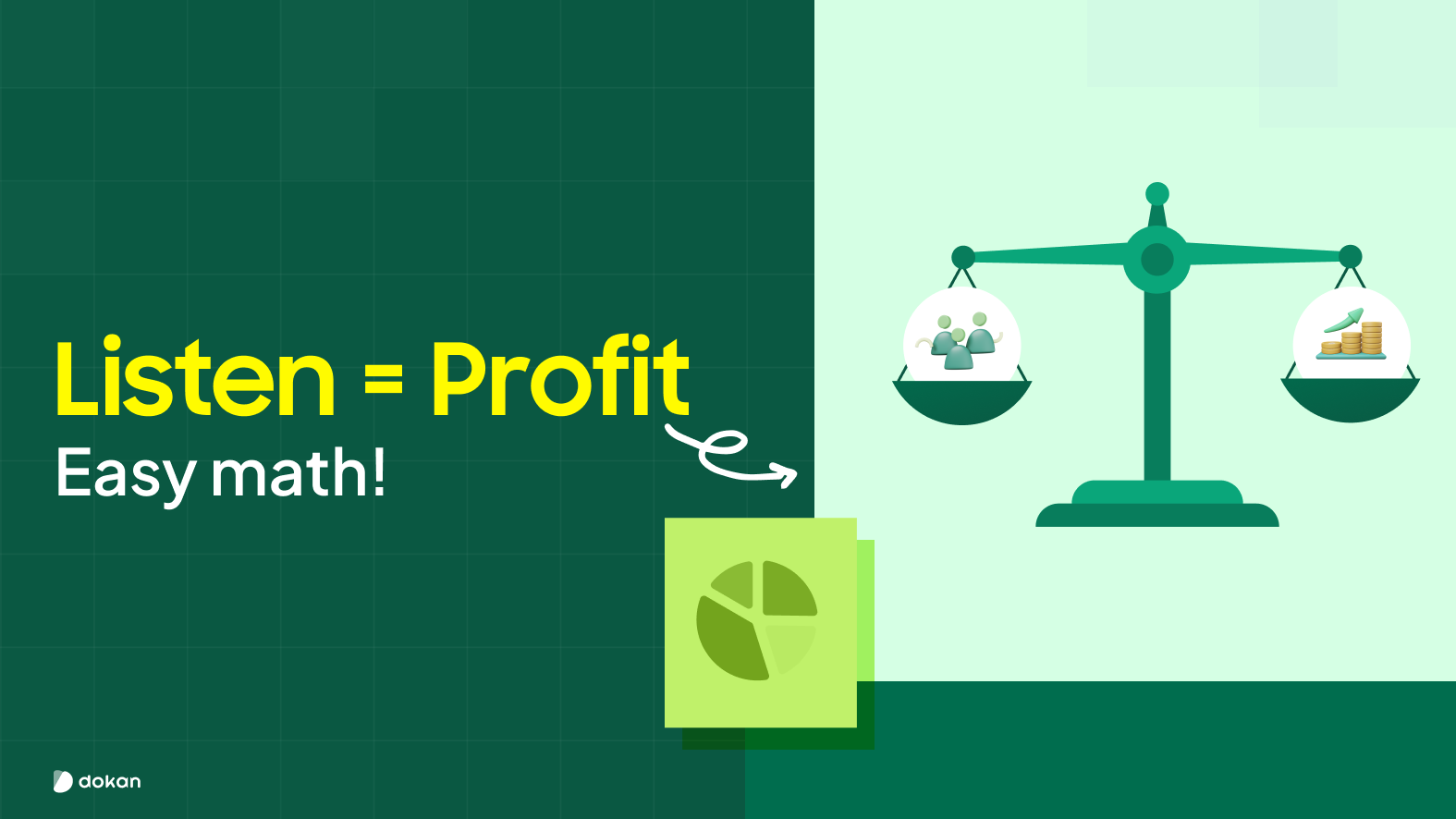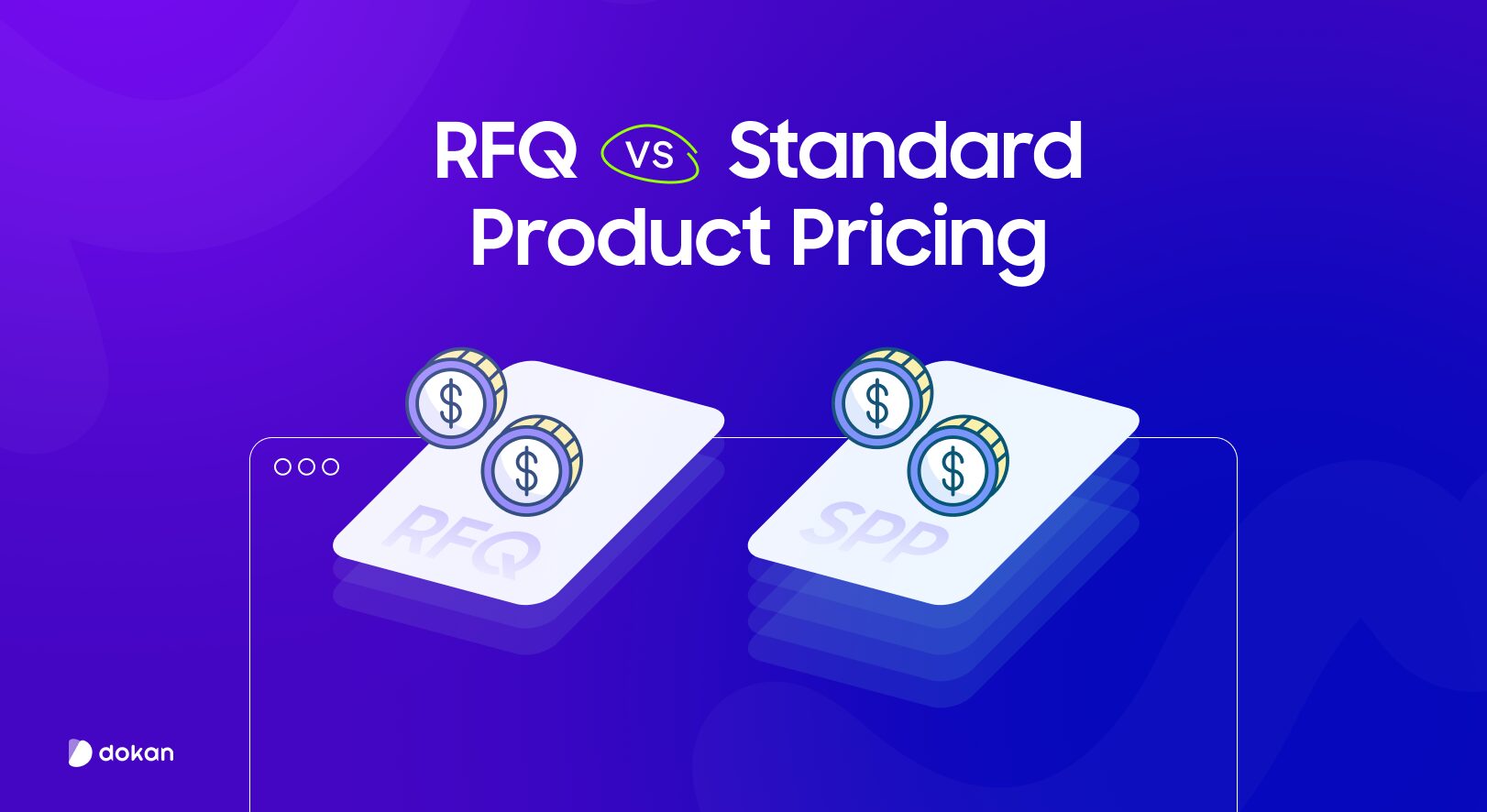Ever wonder if you’re truly listening to your customers? It’s not just about the customer feedback they leave. It’s about understanding it and using it to grow your store.
You’re working hard on your website, your products, and your marketing. But sometimes, it feels like something’s missing.
Well, your customers are already telling you exactly what’s missing. Their feedback can be the key to making real improvements that boost your sales.
In this post, I’ll share some simple, actionable tips to help you turn customer feedback into profit.
What Customer Feedback Can Do for Your Store
We worked with an eCommerce store that was facing high cart abandonment. After reviewing customer feedback, we realized the checkout process was complicated. We simplified it and sales increased by 18%. This is a perfect example of how feedback can drive real change.
Even big brands like Amazon listen to their customers. They gather feedback, tweak their offerings, and constantly improve. This kind of legacy helps them dominate the eCommerce space.
Customer feedback is a roadmap for improvement. It shows you what works and what doesn’t.
Therefore, customer feedback is important because-
- It Helps You Understand Customer Needs: Feedback gives you a clear picture of what your customers like and what they don’t. Maybe your products are great but they’re struggling with the checkout process. Or perhaps they want faster shipping or more detailed product descriptions. Feedback helps you see where to focus.
- It Builds Trust and Loyalty: When customers see you acting on their feedback, they feel valued. This builds trust. Customers who trust you are more likely to come back, tell others about your store, and leave positive reviews.
- It Can Boost Your Conversions: Sometimes small changes can make a big difference. If customers point out that your website is slow, or your return policy is unclear, take note. Fixing these issues can help turn more visitors into buyers.
- It’s Free Market Research: Market research can cost a lot of money. But your customers are giving you this valuable information for free. Their feedback shows you what they like, what they want more of, and what they’re not interested in. This is data you can use to improve your business.
- It Improves Customer Experience: Listening to feedback and making changes based on it shows your customers you care. A better experience leads to happier customers and higher retention.
Now you know how customer feedback can help you understand your audience and boost conversions. Let’s discuss about different types of Customer Feedback.
Types of Customer Feedback
Imagine you’re running a cozy little coffee shop. You want to know what your customers think so you can make their experience even better. There are several ways you can gather their thoughts.
These methods are known as types of customer feedback. Here are the key types of customer feedback you should be aware of:
1. Direct Feedback
This is feedback that comes straight from the customer’s mouth or fingers. It includes surveys, reviews, emails, and chats where customers directly tell you their opinions.
Maybe they leave a review saying the checkout was confusing. Or maybe a customer rates your app 3 out of 5 and explains that it’s slow on mobile. Even a quick message in live chat asking where to find a feature is valuable. These are clear signs pointing to what needs your attention.
If you see the same issue pop up repeatedly, that’s your signal to fix it. Don’t just read the comments and move on. Sort them, tag them, and look for patterns you can act on.
2. Indirect Feedback
This kind of feedback isn’t said out loud. Instead, it shows up in how people behave on your site or app.
Let’s say someone clicks a button again and again. That usually means something’s not working or is confusing. Or maybe a customer spends a long time on a product page but doesn’t add anything to the cart. Something might be unclear or missing.
One of the biggest signs is when a user gets all the way to the checkout page and then leaves. That’s often a problem with trust, price surprises, or the final step feeling too complicated.
To catch these clues, use tools like Hotjar or FullStory. They help you watch how people move, where they get stuck, and what they avoid. These are the kinds of insights you won’t get from a survey.
3. Inferred Feedback
This type of user feedback comes from what customers don’t do.
For example, if users completely ignore a feature you thought they’d love, that tells you something. Or if they skip your onboarding, maybe it’s too long or not helpful. If they upgrade and then cancel within days, they probably didn’t find what they were hoping for.
This kind of silence is often overlooked, but it’s just as important. It helps you see where expectations aren’t being met, what needs to be simpler, or what just isn’t valuable enough. Pay close attention to how users behave over time, especially after big changes or new feature releases.
4. Structured Feedback
This is the kind you ask for in a specific format. Things like multiple-choice polls, rating scales, feature request forms, and bug report templates all fall into this category.
This kind of customer feedback is easy to tally, chart, and analyze. If 68% of users say they want a dark mode, you know what to build next.
It helps spot clear trends and prioritize work. But keep in mind, it often lacks emotion. People might tell you what they want, but not why they want it. That part takes a little more digging.
5. Unstructured Feedback
This is the raw, open-ended kind of feedback. It comes from long customer emails, social media posts, open-form survey answers, or conversations in your online community.
Sure, it’s harder to sort and analyze, but it’s usually full of rich insight. You’ll hear how people describe their problems in their own words. You’ll see what frustrates them, excites them, or keeps them from coming back.
Sometimes a single sentence from a passionate user can lead to a breakthrough. These messages help you understand the deeper story behind customer behavior.
Your customers are always giving you clues. Some tell you things directly. Others show you through what they do, or what they avoid. The more you notice these signs, the better you’ll understand your customers. It doesn’t have to be complicated. Just start by listening a little closer.
How to Collect Customer Feedback
Now that you know the types of feedback, let’s take a look at how you can actually collect customer feedback efficiently. This step is crucial for gathering the data you need to improve your store.
1. Built-in WordPress Tools
If you’re using WordPress for your online store, there are a lot of tools to collect feedback from your users. Plugins like WPForms or Formidable Forms allow you to set up simple, custom surveys and contact forms.
You can embed these forms on product pages, checkout screens, or thank-you pages to ask visitors specific questions or gather general feedback about their shopping experience.
Thank you for your purchase! Please take a moment to answer the following questions:
- How easy was it to find what you were looking for? (1-5 scale)
- Was the checkout process smooth? (Yes/No)
- How satisfied are you with the product quality? (1-5 scale)
- Any suggestions to improve your shopping experience?
2. Plugins for Reviews and Ratings
Customer reviews and ratings are one of the most direct ways to collect feedback. Plugins like Site Reviews and WP Customer Reviews can help you set up review systems for your products. Encouraging reviews not only gives you valuable insight but also helps build trust with future customers. Positive reviews are a form of social proof that can boost conversions.
After a product is delivered, you can send a gentle nudge through email to collect their thoughts.
We’d love to hear your thoughts! Please leave a review for your recent purchase of [product name].
Your feedback helps us improve and helps others make better choices!
3. Live Chat Tools

Sometimes, real-time feedback is the most valuable. Live chat tools like Tidio and LiveChat allow customers to ask questions and provide instant feedback if they have any issues. You can use these tools to identify problems quickly and address them on the spot as well as also gathering insights for future improvements.
Example Template for Live Chat Script:
Hi there! Thanks for visiting [Store Name]. How can I help you today?
This script can help guide your conversation and gather useful feedback in real time.
4. Email Follow-ups
One of the easiest ways to collect feedback is through email. After someone places an order, you can send a quick follow-up to see how things went.
Tools like MailPoet or Mailchimp make this super simple. You can set up automated emails that go out after a purchase. These emails can include a short survey or just a few basic questions.
You don’t need to ask a lot. Focus on one or two key areas, like delivery time or product quality.
Here’s a quick example you can use:
Thank you for your recent purchase! We’d love your feedback to help improve our store.
As a thank you, enjoy 10% off your next order with this code: THANKYOU10
It’s a small touch, but it shows that you care. And it gives you real feedback that you can actually use.
5. Social Listening Tools
Your customers don’t always send feedback directly. Sometimes, they talk about your brand on social media. And if you’re not listening, you might miss it.
You can use tools like Mention, Brand24, and Google Alerts. They let you track what people are saying about your brand across the web.
Just set up a few alerts to monitor mentions of your store or products. That way, you get notified whenever someone talks about you online.
Here’s how to set it up:
Create alerts for things like:
These alerts help you stay in the loop. You can catch issues early, reply quickly, or just learn what people really think.
Sometimes, the most honest feedback is shared in a tweet or Reddit post. You just need to be there to catch it.
6. On-Site Feedback Widgets
Sometimes the best time to ask for feedback is when the user is actively engaging with your site. On-site widgets like FeedbackFish, Qualaroo, or Hotjar Surveys let you collect feedback right on the page. These can pop up at just the right moment like after a user completes a purchase or scrolls through a product page.
You can ask:
Because they’re short and simple, users are more likely to respond right away. This gives you fast, targeted insight without needing long forms or emails.
7. Internal Team Feedback
Your support, sales, and marketing teams talk to customers every day. They know what people are struggling with, what questions they keep asking, and what they wish the product did better.
Make it a habit to check in with your team regularly. Ask them things like:
This kind of feedback is easy to miss, but it’s often the most actionable. Your team sees patterns that data tools might not catch.
You don’t need to use every method at once. Just pick the ones that fit your store and your customers. Once you start collecting feedback, the next step is to make sense of it.
Let’s take a look at how to analyze all this information and turn it into something useful.
Ways to Analyze Customer Feedback
Once you’ve collected feedback, the next step is to analyze it.
Analyzing feedback helps you spot patterns, understand pain points, and make informed decisions about how to improve your store.
Here’s how you can make the most of the data you’ve gathered:
| Method | Channel | When to Use | Tools (Optional) |
|---|---|---|---|
| Post-purchase surveys | Email, Website | Right after a customer buys | Typeform, Google Forms |
| Live chat prompts | Website | During browsing or checkout | Crisp, Tawk.to |
| Feedback widgets | On-site | After scrolling or an action | Qualaroo, Hotjar |
| Social media responses | Instagram, X, etc | Casual and ongoing | None needed |
| Internal team insights | Internal channel | Weekly or monthly check-ins | Notion, Airtable |
1. Group Feedback by Topic
Start by organizing feedback into categories. You don’t need fancy tools for this. A simple spreadsheet or Trello board works fine.
Common categories might include:
Once you group similar comments together, patterns will start to show up. If a bunch of people mention slow delivery or confusing navigation, you know where to focus.
2. Tag and Label Feedback
If you’re using tools like HelpScout, Intercom, or a feedback form plugin, you can tag incoming messages based on keywords or themes.
For example:
Tagging helps you track how often certain issues come up. The more frequently something is mentioned, the higher it should move on your priority list.
3. Pay Attention to Trends Over Time
Feedback isn’t just about what’s happening right now. It also shows how things are changing.
Maybe your support team received ten complaints about payment failures last month, but only two this month. That’s progress.
Track feedback over weeks or months to see if specific problems are growing, shrinking, or staying the same. This helps you measure the impact of the changes you’ve made.
4. Combine Quantitative and Qualitative Data
Both types of data matter.
- Quantitative feedback includes things like star ratings, survey scores, or response rates.
- Qualitative feedback includes open-ended comments, reviews, or chat messages.
A low rating tells you something’s wrong. But the comment that goes with it explains why. Use both types together to get the full picture.
5. Look at Behavior-Based Feedback Separately
Behavioral feedback, like heatmaps or session recordings, needs a different kind of review.
Watch where users get stuck, what they ignore, and how they move through your site. This helps you spot friction points that users might not mention in words.
You can also pair this with support tickets or reviews to confirm what’s really causing problems.
6. Prioritize Based on Impact and Frequency
Not all feedback needs immediate action. Some things are nice-to-have. Others are must-fix.
Look at two things:
Focus on the problems that show up a lot or cause people to leave. Fixing those will make the biggest difference.
Helpful Tools to Analyse Your Customer Feedback
You can use a variety of tools to help with your analysis. Here are a few options to streamline the process:
1. Google Sheets or Excel
Simple but powerful. Perfect for:
If you’re not ready for advanced tools, this is the easiest way to start analyzing feedback.
2. Hotjar and Microsoft Clarity
Great for behavior-based feedback. These tools help you:
This kind of visual data is useful when users aren’t saying much but their actions tell a story.
3. Typeform, WPForms, and Formidable Forms
These tools are great for collecting structured feedback through:
They let you export results into spreadsheets or connect with other tools for deeper analysis.
4. Intercom, Tawk.to, and Zendesk
If you’re collecting feedback through support tickets or live chat, these tools help you:
They also offer built-in reports to help you spot common complaints and customer needs.
5. Notion, Trello, or Airtable
These are useful if you want to keep everything organized in one place.
They’re flexible and work well if you want to create a simple system that grows over time.
6. Brand24, Mention, or Google Alerts
For social listening and brand mentions, these tools help you:
This gives you access to feedback that isn’t always sent directly but still matters.

Subscribe to
Dokan blog
Showcase Your Feedback to Build Trust
Once you’ve collected and acted on feedback, it’s important to showcase it in a way that builds trust with your customers.
Here’s how you can do it:
1. Show Reviews on Product or Service Pages
Make sure each product or service page includes ratings and reviews. Highlight what people liked and share honest comments. This helps visitors make informed decisions.
You can include:
Even a few detailed reviews can give new visitors the confidence to move forward.
2. Use Testimonials Across Your Website
Testimonials are short quotes from happy customers. They work well on landing pages, pricing sections, or even your homepage. A simple sentence about what someone loved can make a big impact.
To make testimonials stronger:
This helps new visitors relate to the experience of others.
3. Share Feedback in Emails and Marketing
Positive feedback isn’t only for your website. You can also use it in newsletters, promotional emails, and social media.
Try including statements like:
These messages add a layer of trust without needing long explanations.
4. Create a Dedicated Feedback or Reviews Page
If you have lots of feedback, consider putting it all in one place. A page filled with reviews, testimonials, and customer stories helps visitors do their own research.
You can organize the page by:
This kind of transparency makes people feel more confident about doing business with you.
5. Respond to Feedback Openly
Whether a customer leaves a glowing review or points out a problem, responding makes a difference. It shows that you’re listening and that you care.
Here’s how to approach it:
Even a short reply shows that there are real people behind the brand who are paying attention.
6. Don’t Hide Negative Comments
It’s tempting to remove or ignore negative feedback, but leaving it visible can actually build more trust. No product is perfect, and most people understand that. What matters more is how you handle it.
By showing that you don’t filter out criticism, you make your brand feel more transparent and human. In some cases, a well-handled negative review can win more trust than a perfect five-star one.
7. Share Case Studies Based on Real Feedback
Case studies are a powerful way to show that you don’t just collect feedback — you act on it. They tell a complete story of how you took a customer’s concern or suggestion and used it to improve your product or service.
Here’s what to include:
For example, if several customers mentioned that a product wasn’t durable, and you redesigned it based on that feedback, a case study is the perfect place to show what happened next. This kind of transparency builds credibility and shows you’re serious about continuous improvement.
8. Highlight User-Generated Content
User-generated content is one of the most genuine forms of feedback. It includes photos, videos, or stories shared by real customers who love what you offer.
You can encourage customers to share their experiences by:
Once shared, you can feature this content on your homepage, product pages, or Instagram feed. It makes your brand feel real and relatable. Plus, it motivates others to join in and share their own experiences.

Continuous Feedback Loop
A continuous feedback loop helps you stay connected with your customers and keep improving. Here’s how you can make it work:
- Ask regularly: Get feedback at key points like post-purchase, after support chats, or when a user is about to leave.
- Keep it simple: Use short surveys or single-question prompts. Make it easy to respond via email, website, or chat.
- Acknowledge every response: People want to feel like their voice matters. Even a simple thank-you message can leave a lasting impression and encourage repeat feedback.
- Review consistently: Track feedback monthly or quarterly. Watch for trends, spot recurring issues, and measure changes over time.
Regular feedback analyzation helps you make smarter decisions, improve the customer experience, and ultimately grow your business.
With a continuous feedback loop in place, you can stay on top of customer needs and keep improving your store.
Use Customer Feedback to Accelerate Your Store Growth
Throughout this post, we’ve looked at how customer feedback can shape a better store. It improves the shopping experience, builds trust, increases conversions, and even helps with product development. More importantly, we’ve shared practical ways to collect and use that feedback effectively.
When you gather and review customer input regularly, you start to spot what really matters. These insights lead to smarter decisions, stronger customer relationships, and better sales outcomes.
Even small tweaks based on customer feedback can lead to big results.
Try just one method this week. Ask for a review, send out a short survey, or set up a feedback prompt on your site. The sooner you start, the faster you’ll see the impact.
Already using feedback to improve your store? Share what’s worked for you in the comments. Have further queries on customer feedback or how to use them? Do use the comment section below.
Subscribe to
Dokan blog
We send weekly newsletters, no spam for sure!







Leave a Reply